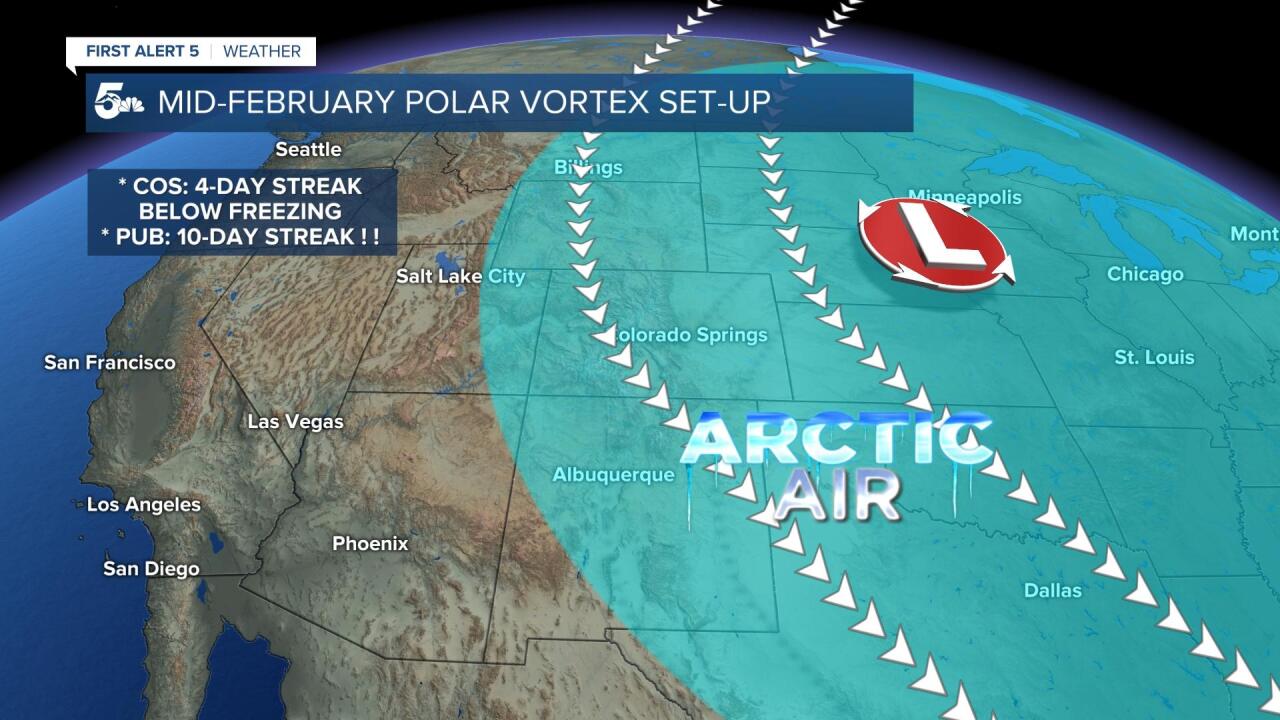Last month's deep freeze brought brutally cold air from the Polar regions all the way down to the Gulf Coast.
In Southern Colorado, we took a ride on the Polar Express, setting records along the way.

During the mid-February cold snap, we spent four days in a row below the freezing mark in Colorado Springs.
In Pueblo, that streak reached 10 days, and ran from February 9th to 18th.

The coldest part of the event occurred between February 12th to the 15th.
In Colorado Spring, we set two next records during this time.
On February 15th, we dropped all the way down to -16 degrees.
We also saw our 11th coldest February on record, with an average temperature of 26.1 degrees.
Pueblo ended up seeing it's 13th coldest February on record, with an average temperature of 27.4 degrees.
Last month's extreme cold appears to be an anomaly of sorts as records indicate steady temperature gains over the past 50 years.
Take a look at this graphic, furnished by Climate Central.

It's an examination of the lowest temperature reported in Colorado Springs from 1970 to 2020.
The chart shows an overall increase in extreme cold over the past 50 years.
The solid white line represents the mean, or the average, and it shows an increase of 6.6 degrees over this period.
Warming or not, science supports a changing climate could be responsible for more extreme weather events in the future, including prolonged periods of severe drought in Southern Colorado.



